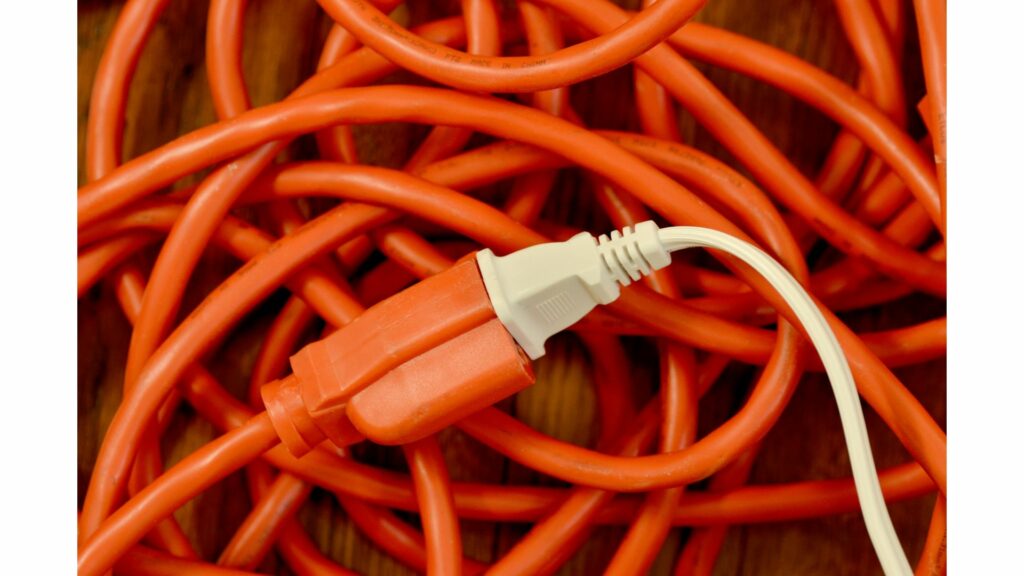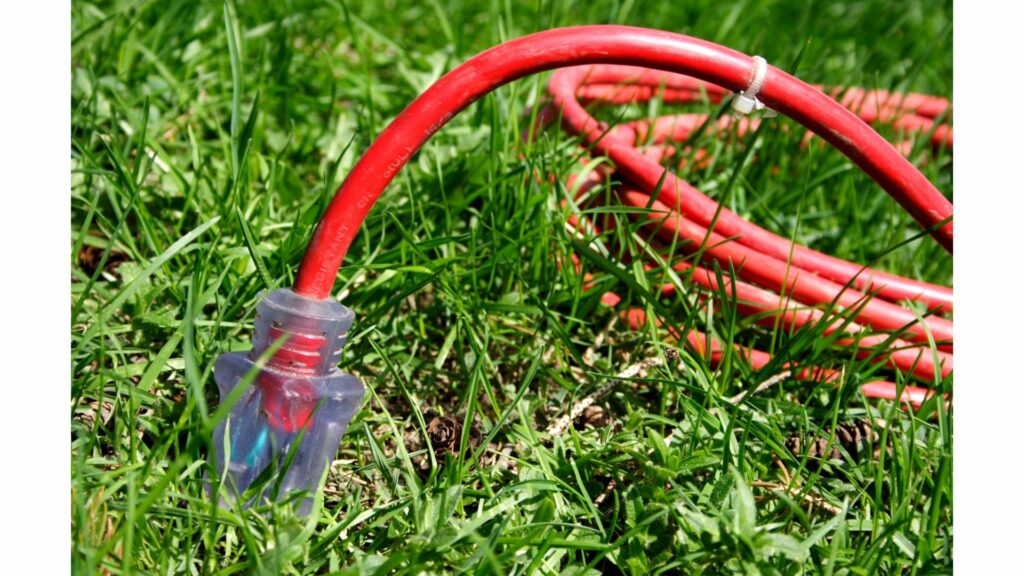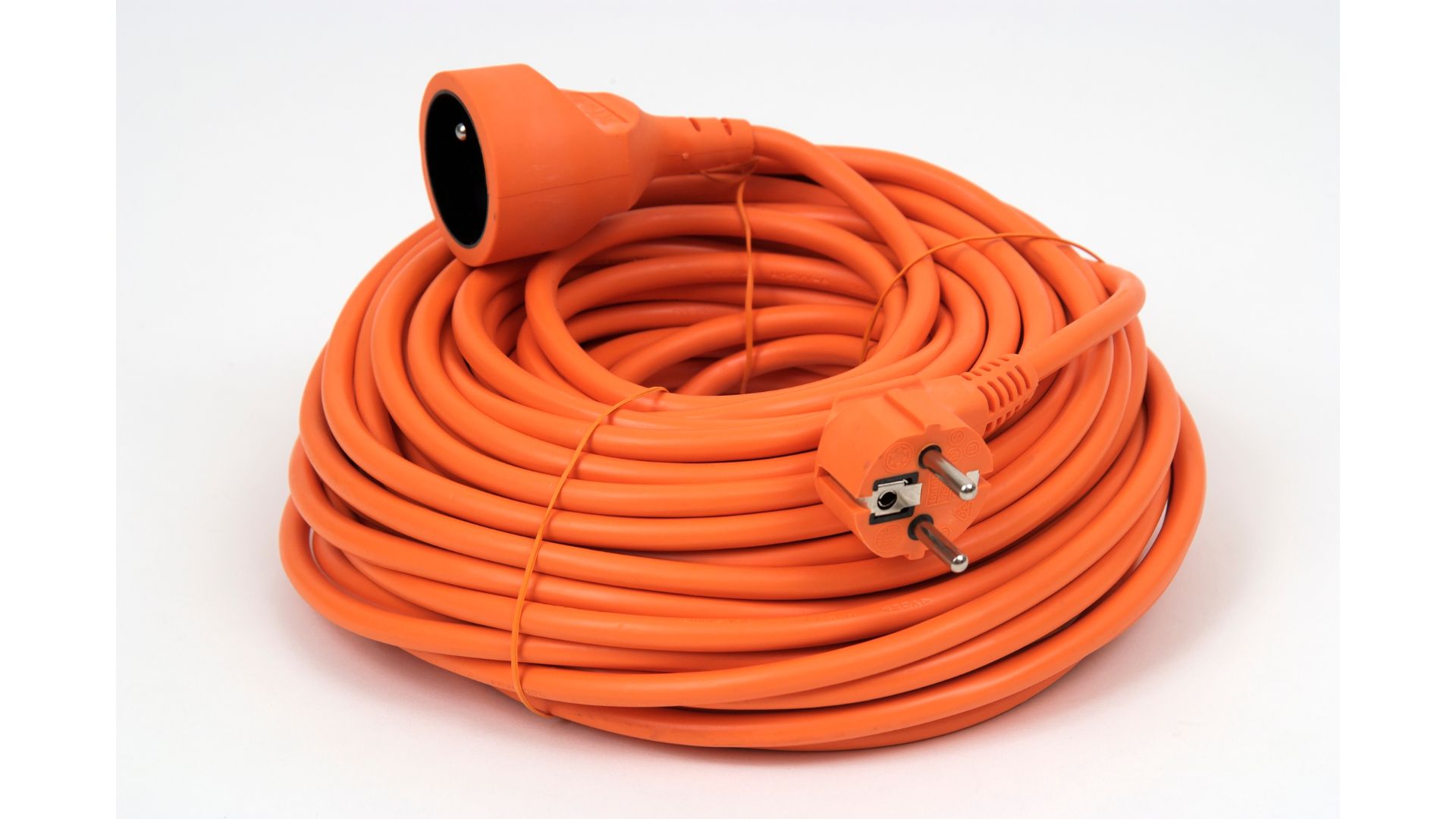You’re looking at lengths ranging from two feet to three hundred feet. Extension cords are supposed to extend an outlet’s reach. Therefore, the length is a vital consideration. You don’t want to buy an extension that is too short to reach your appliance. On the other hand, long extension cords are risky.
What Length Does Extension Cord Come In?
The extension cords in your local store are anywhere between a few feet and one hundred fifty feet. But these devices can easily exceed that range. While 300-foot cables are not commonplace, you will find them if you go looking.
What Is The Smallest Length Extension Cord?
If two-foot-long extension cords sound ridiculous, you might be surprised to learn that some manufacturers sell one-foot-long extension cords, which seems to defeat the purpose because people buy extension cords for their length.
They want to bridge large gaps. However, some consumers use these objects in place of power strips. They want to multiply the number of outlets. Therefore, a one-foot cable is more than adequate. You may also find these short lengths in USB cables.
Some organizations classify USB cables as extension cords because they extend the length of signal transmission cables. This doesn’t include passive USB cable extenders that ignore USB standards. They stand out because they don’t have a USB logo.
What Is The Longest Extension Cord?
There is no maximum length for an extension cord. That claim sounds ridiculous. After all, extension cords have a maximum length of 100 feet. However, that is the maximum length you can safely use or the recommended length. Your local store may also limit their stock to extension cords that don’t exceed 100 feet. However, you have commercial-grade items like the GFQHF 300-volt 18AWG extension cord, which is a whopping 1000 feet.
Does that make 1000 feet the maximum length? No, because people can make their own extension cords. First, some consumers extend an extension cord’s length by daisy-chaining multiple extension cords.
You can easily exceed 1000 feet if you daisy-chain enough cables. But this is a bad idea. You will start a fire. Secondly, you can make an extension cord. Homemade extension cords can be as long as you want.
But you can’t trust them because they haven’t undergone the relevant testing procedures and quality control protocols.
Does Extension Cord Length Matter?
Yes, extension cord length matters. If the length weren’t important, manufacturers wouldn’t offer extension cords in different lengths. You have three considerations to keep in mind:
- Popular Science has found that short extension cords are useless because they can’t do their job. They can’t bridge the gap between an appliance and a distant outlet.
- What if the cable is too long? It will start a fire or prevent the appliance from working.
- Long extension cords are heavy. They will either become tangled or trip passersby.
What Happens If I Choose The Wrong Length Extension Cord?
A short extension cord doesn’t matter. If it can’t reach the outlet, you can buy a new one. Long extension cords are a bigger challenge because they can start fires. Consider the following:
1). Rating
Amps are the most important attribute. Volts refer to the force that pushes electrons through a conductor. The voltage may influence the cable’s insulation. But where extension cord length is concerned, the amps are the primary focus because they reveal the volume of current flowing through a line.
The load will determine the amperage. You don’t want an extension cord that can’t support your application.
Once you identify the amperage, you can turn to the gauge. These two variables go hand in hand. The higher the amps, the thicker the cable. In AWG, a smaller number signifies a higher gauge.
You want an extension cord thick enough to transmit the amps your appliance uses without overheating.
2). Resistance
Overheating matters because electricity generates heat as it flows through a conductor due to the opposition it encounters. A higher resistance produces more heat. This is why the gauge is so important. Thin wires are more likely to overheat because they have a higher resistance.
This encourages contractors to prioritize the thickest wires because they transmit large volumes of electricity without overheating. Admittedly, the highest gauges are also the stiffest, heaviest, and most challenging to install. Therefore, you should find a balance. You don’t respond to high resistance by getting the thickest wires on the market.
3). Length
Once you know why the amps, gauge, and resistance matter, you can understand the role an extension cord’s length plays. A longer extension cord has more resistance than its shorter counterpart.
If the cable is too long, it will catch fire because the conductors and insulation cannot tolerate the resulting heat. Why does the gauge matter? Because you can prevent overheating in a long extension cord by increasing the gauge. For instance:
15-Foot Extension Cord
- 20 Amps – 14 AWG
- 15 Amps – 16 AWG
20-Foot Extension Cord
- 20 Amps – 14 AWG
- 15 Amps – 16 AWG
25-Foot Extension Cord:
- 20 Amps – 14 AWG
- 15 Amps – 16 AWG
- 12 Amps – 16 AWG
50-Foot Extension Cord:
- 20 Amps – 12 AWG
- 15 Amps – 12 AWG
- 12 Amps – 14 AWG
- 10 Amps – 14 AWG
100-Foot Extension Cord:
- 20 Amps – 8 AWG
- 15 Amps – 10 AWG
- 12 Amps – 10 AWG
- 10 Amps – 12 AWG
150-Foot Extension Cord
- 20 Amps – 6 AWG
- 15 Amps – 8 AWG
- 12 Amps – 8 AWG
- 10 Amps – 10 AWG
200-Foot Extension Cord
- 20 Amps – 6 AWG
- 15 Amps – 6 AWG
- 12 Amps – 8 AWG
- 10 Amps – 8 AWG
Thicker conductors can transmit electricity over large distances without overheating. If you can’t afford a higher gauge, stick to a shorter cord. Manufacturers do this all the time. All their heavy-duty appliances feature short power cords to reduce resistance and overheating.
The Spruce has given the example of a 5-foot extension cord that runs a table saw without overheating. If you replace it with a 50-foot extension cord, things will go wrong.
4). Voltage Drop
Overheating cables are not your only concern. Resistance produces a voltage drop. A higher resistance generates a greater voltage drop. A significant voltage drop can prevent your appliance from starting because it doesn’t have an adequate power supply.
If the appliance runs and has a motor, the device may burn out because it must work harder than usual to perform its task. A high voltage drop contributes to overheating because the application must pull more current to maintain its operations.
Things To Consider While Choosing Extension Cord Length
Consumers usually base their extension cord length selection on one or more of the following factors:
1). Distance
This is the most crucial consideration. You need an extension cord long enough to reach the appliance you want to run. Long cables are dangerous because they are more likely to overheat. However, that doesn’t mean you should settle for a short extension cord.
Short cables won’t help you if they can’t bridge the outlet and application. Find a line whose length fits the distance you want to cover.
2). Gauge
The gauge and length are connected. Don’t forget that a cable’s gauge should increase with its length. The largest distances require the thickest conductors. This allows you to accommodate heavy-duty appliances with significant electrical demands without starting a fire.
Start by selecting the length. Choosing the gauge beforehand will force you to tolerate a length that doesn’t fit the distance you want to cover. Measure the distance between the outlet and the appliance before finding a corresponding gauge.
3). Load
The load is just as vital as the distance. Yes, long extension cords are more likely to overheat. However, you can overwhelm the shortest extension cord if it can’t withstand the application’s electrical demands.
Extension cord manuals mention the tool’s watt and amp rating. This allows you to determine whether the product can run the load you have in mind. These three variables are connected. You can’t choose one without considering the other.
The gauge tells you the amps. It also reveals the length you can use. The amps can show the gauge and influence the length you select. On the other hand, you may choose to limit the length to accommodate higher amps because you can’t afford a thicker cable.
4). Coil
Is your extension cord so long that it coils around a cylindrical base? Coiled extension cords are easier to transport and store. However, you must unspool them completely before connecting a load.

Coiled cables tend to overheat because the heat can’t escape. The insulation on a coiled extension cord soften at the start. If you continue running the appliance, you will smell burning plastic as the insulation melts. Eventually, a fire will start.
Therefore, you shouldn’t buy excessively long, coiling cables unless you genuinely need them. Don’t expect everyone in your home to remember to uncoil the extension cord before using it.
5). Environment
Does your extension cord work inside or outside? It isn’t enough to select extension cords with a higher gauge and amp rating. They won’t help you in the long run if the application is outside. Exterior settings expose the extension cords to extreme conditions, such as direct sunlight, that cause wear and tear, increasing the chances of overheating.

Don’t take chances on a long exterior cord unless it has sufficient insulation. Learn to interpret the labels on the jacket. For instance, ‘W’ shows that a cable is rated for outdoor use. ‘E’ points to a thermoplastic elastomer rubber.
You can prevent overheating by finding an extension cord whose attributes repel the corrosive and destructive conditions in the environment.
What Does OSHA Say About It?
OSHA expects consumers to limit the extension cord length to 100 feet. You should also take basic precautions to prevent fires, including:
- Plug heavy-duty devices such as space heaters directly into wall outlets.
- Replace extension cords with cracks, cuts, and tears. Don’t use electrical tape to fix cables with exposed wires. Throw them away.
- The New York Times warns against plugging multiple extension cords into one another. This increases the resistance. You will start a fire.
- eHow has published a list of steps showing consumers how to reduce an outdoor extension cord’s length. However, you should leave such work to a professional. Better yet, put the long cable in storage and buy a shorter replacement.
- Don’t use indoor extension cords outside. They won’t survive the extreme weather elements.
- Don’t hide extension cords under carpets and rugs. They will overheat.
- Keep these devices away from areas with heavy human traffic.

